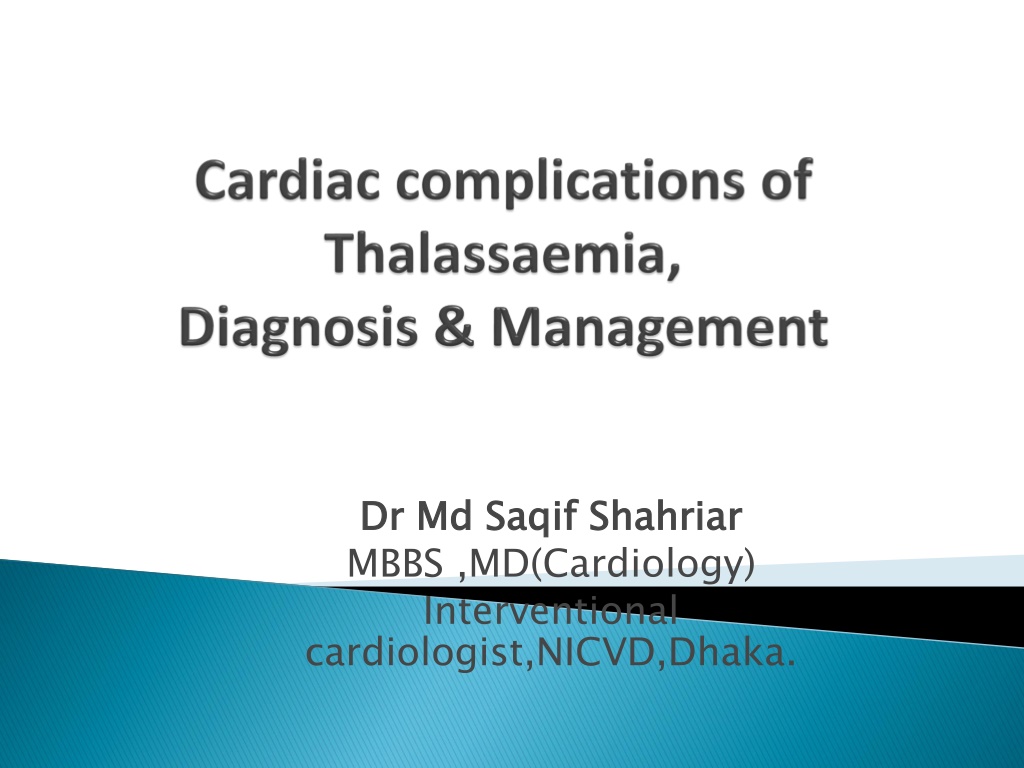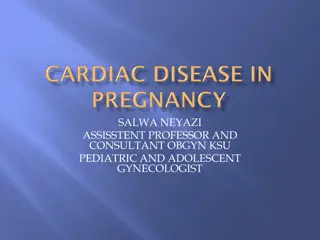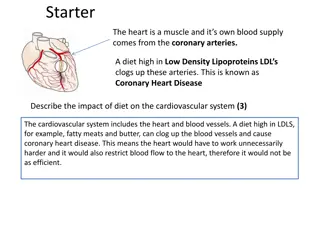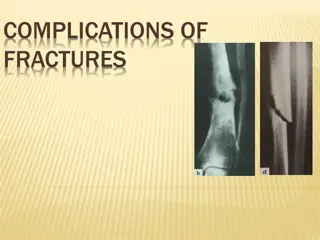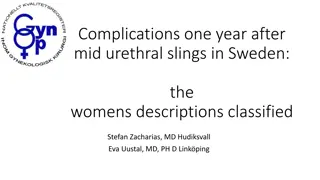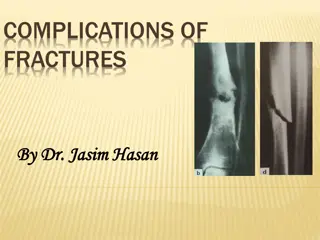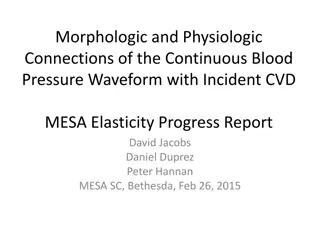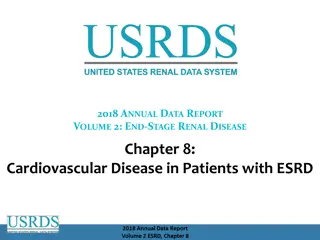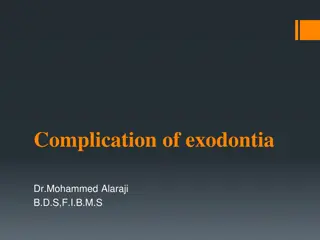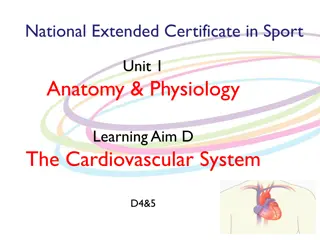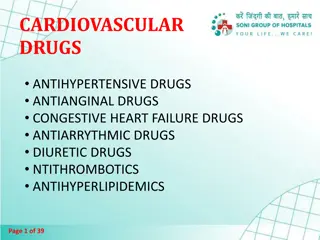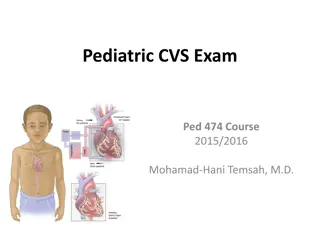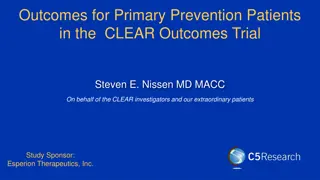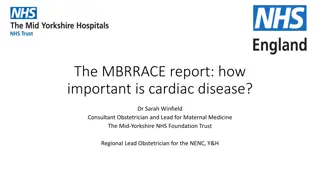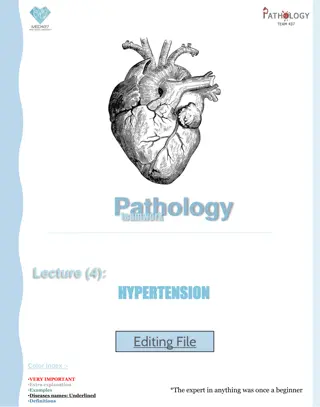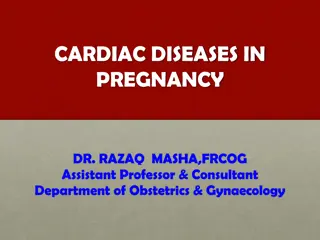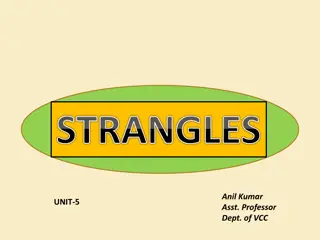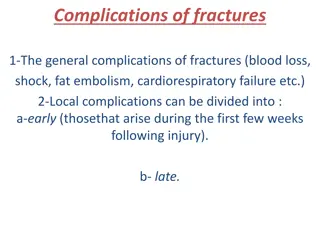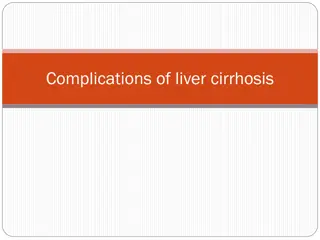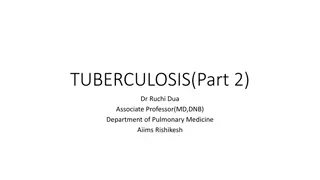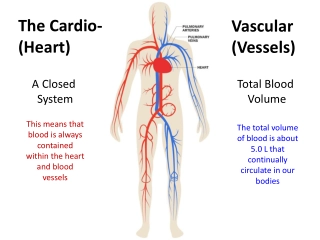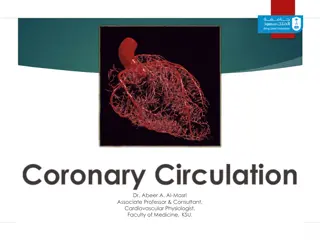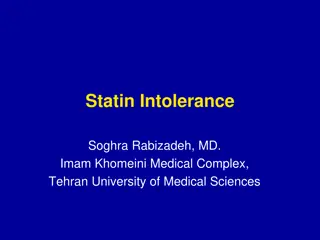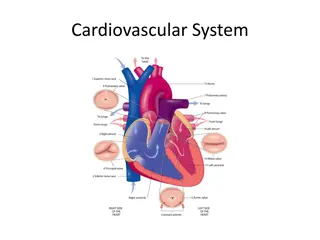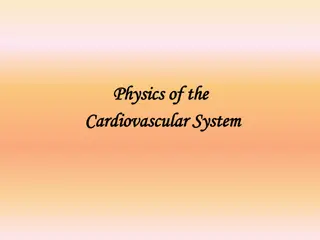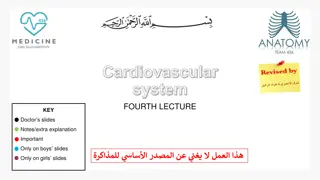Understanding Cardiovascular Complications of Thalassaemia
Cardiovascular complications of thalassaemia can be categorized into iron overload-related issues such as myocyte failure and arrhythmias, and non-iron overload complications including pulmonary hypertension and atrial fibrillation. Cardiac iron accumulation poses a significant risk, leading to cardiac dysfunction and eventual fibrosis. Nutrient deficiencies can further exacerbate cardiac issues. Symptoms include breathlessness, peripheral edema, and exercise limitations. Diagnosis and management involve monitoring for signs of heart failure with a focus on addressing underlying causes and symptoms.
Download Presentation

Please find below an Image/Link to download the presentation.
The content on the website is provided AS IS for your information and personal use only. It may not be sold, licensed, or shared on other websites without obtaining consent from the author. Download presentation by click this link. If you encounter any issues during the download, it is possible that the publisher has removed the file from their server.
E N D
Presentation Transcript
Dr MBBS ,MD(Cardiology) Interventional cardiologist,NICVD,Dhaka. Dr Md Md Saqif Saqif Shahriar Shahriar
The cardiovascular complications of thalassaemia can be considered in two major clinical categories- 1. Iron overload complications a. Reversible myocyte failure. b. Arrhythmia, including heart block. c. Arterial changes - loss of vascular compliance
2. Non-iron overload complications a. Pulmonary hypertension. b. Arrhythmia particularly Atrial Fibrillation (AF) later in life. c. Thrombotic stroke, linked to AF. d. Cardiac function changes due to restriction / diastolic dysfunction / fibrosis. e. Arterial changes - loss of vascular compliance.
Cardiac iron accumulation is the single greatest risk factor for cardiac dysfunction in thalassaemia. Cardiac iron loading occurs when the heart is exposed to high circulating non transferrin bound iron species for long periods of time. Once labile iron levels rise in the myocyte, they produce oxidative damage transporters, and DNA, triggering cardiac dysfunction, arrhythmias and if not reversed, eventual fibrosis. to membranes, iron
Although iron is the most important cause of cardiac dysfunction, deficiencies in carnitine, thiamine, vitamin D, and selenium can worsen cardiac function; these nutrients are commonly deficient in thalassaemia .
Symptoms are related to the degree of ventricular impairment- Breathlessness during exercise Dyspnoea, peripheral oedema, hepatic congestion and severe exercise limitation on advance stage.
Clinical presentation of heart failure is variable. Classic left heart failure features, including rales, or crackles, dyspnea on exertion, and orthopnea are a late finding. Right heart failure symptoms, including neck vein distension, hepatomegally , and peripheral edema, often are the first clinical signs The development of the signs of classical heart failure implies advanced disease with a poor prognosis,
A thorough medical history and physical examination are required which should also include: 12-lead electrocardiogram (ECG) and A detailed echocardiogram, undertaken according to published guidelines. Cardiac magnetic resonance imaging (CMR), used to quantitatively estimate cardiac iron overload (T2*), has become an invaluable tool in the estimation of clinical risk for the development of heart complications in thalassaemia
Electrocardiogram the ECG or EKG The electrocardiogram is frequently abnormal, but changes are typically non- specific. Depolarisation changes in the T-waves and ST segments of the anterior chest leads, Sometimes a preponderance of right ventricular voltages. Occasionally P-waves are also affected, suggesting bi-atrial enlargement. First degree heart block and conduction disturbance in the forms of bundle branch block may be seen
1.Dimensions a. LV in diastole & systole. b. Atrial dimensions & areas. c. Pulmonary artery and Aortic root. d. Ventricular thickness. e. LV and RV dimensions/ volumes. 2. Function a. LV systolic function, EF by : Teicholz and Simpson s methods. b. Diastolic function. i. Mitral Doppler. ii. Tissue Doppler annular velocities. iii. Pulmonary vein Doppler profiles. 1.Dimensions 2. Function
3. Doppler flow assessments a. Tricuspid regurgitant jet velocity (TRjVmax). b. Pulmonary artery flows, acceleration/ diastolic jet velocity 4. Morphology a. Structure and function of valves. b. Exclusion of thrombus in right atrium in patients with implanted lines. c. Chamber morphology. d. Presence of shunts or foramen ovale. 3. Doppler flow assessments 4. Morphology
Figure 1. Examples of echocardiography in thalasaemia patients
To measure tissue iron load using noninvasive magnetic resonance imaging (MRI), The value of the T2* parameter is that it identifies those individuals at risk of developing cardiac complications, before they become detected by echocardiography. cMRI T2* < 20 ms should prompt alternative diagnoses. Contrast-enhanced cardiac MRI can also be used to screen for myocarditis.
Reference values Reference values T2* T2* Normal >20 Normal >20 2.71 Mild 15-20 Moderate 10-15 Severe <10 T2= 17.5 ms
A summary of recommendations for management of iron cardiomyopathy & heart failure is as follows : Regular chelation therapy and maintenance of a CMR T2* > 20 ms. Combined therapy with deferiprone 75-100 mg/kg and deferoxamine 40-50 mg/kg/day represent the best option to clear cardiac iron and stabilize ventricular function Pressor medications
Diuretics(eg. Furosemide) will alleviate congestive symptoms Amiodarone therapy in cardiomyopathy or heart failure patients. Treatment of myocardial dysfunction is best undertaken using a group of drugs including angiotensin converting enzyme inhibitors (ACE inhibitors). In controlled trials, ACEI as well as beta-blockers and aldosterone antagonists, have been shown to reduce mortality in patients with cardiomyopathy and to reduce the rate of appearance of heart failure. arrhythmia control of
BNP or pro-N-terminal BNP) is a tool for decompensated heart failure and fall in response to treatment. Heart transplant remains a treatment of last resort.
Arrhythmias occured in thalassaemia are - Atrial fibrillation (elderly incidence up to 40%) SVT Frequent PVC , non-sustained VT Sudden cardiac death is relatively rare by prolonged QT & Torsades de pointes
1) Adequate chelation 2) Management of AF Acute AF - DC cardioversion or chemical cardiovert by Amiodarone. Chronic AF Rate control, rhythm control & prevention of thrombo-embolism by anti coagulation . 3) ICD implantation
Historically, before the availability of chelation therapy, complete heart block was relatively common in thalassaemia patients, occurring in up to 40% of those aged over 15 years Cause- Severe iron overload Treatment- Adequate chelation thepary MRI compatible pacemaker implantation.
Pulmonary hypertension is quite common in thalassaemia intermedia syndromes but reports on the prevalence in thalassaemia major vary. Severity of iron overload appear to be the strongest predictors hypertension of pulmonary
Prevalence rates ranging between 10% and 78.8% (averaging at ~30%) Higher prevalence generally noted in NTDT( - thalassemia intermedia and hemoglobin E/ - thalassemia) than -thalassemia major patients
Impaired endothelial function, Smooth muscle proliferation, and Vascular obliteration in the pulmonary vasculature
Echocardiographic hypertension should be performed annually or biannually. screening for pulmonary TR velocity below 2.5 m/s represents a negative screening test, 2.5 3.0 m/s a borderline finding and TR velocity > 3 m/s a positive finding. High resolution CT and CT angiogram to exclude pulmonary fibrosis and thromboembolic disease
Cardiac catheterization is indicated in patients with persistent elevated TR velocity greater than 3 m/s despite hematological status optimization & Brain natriuretic peptide and six-minute walk tests are useful for trending response to therapy.
Patients with possible, likely, or confirmed pulmonary hypertension may benefit from the following interventions- Blood transfusion hydroxyurea Sildeanfil citrate Endothelin 1 receptor blocker, Bosentan Adequate control of iron overload status Anticoagulant therapy- prophylaxis against thrombosis
1) Thalassaemia major patients with heart failure should be managed at (or in close consultation with) a tertiary center experienced in thalassaemia . 2) Management of diuretics, pressors, and antiarrhythmic therapies in thalassaemia patients with heart failure must account for their unique physiology compared with the general population . 3) Screen and treat endocrine and metabolic co-morbidities in thalassaemia major patients with ventricular dysfunction
4) Ventricular arrhythmias and heart failure are often reversible following intensive chelation, after weeks or months of therapy. 5) Any arrhythmia associated with cerebral symptoms must be considered a medical characterized . emergency until fully 6) Combined therapy with deferoxamine and deferiprone represent the best available intensive chelation for thalassaemia major patients with severe cardiac iron deposition, with or without over heart failure.
7) Routine cardiac T2* assessment represents the best available tool to prevent cardiac dysfunction. 8) In places lacking cardiac T2* assessments, preclinical reductions in cardiac systolic function can also be used to detect cardiac iron toxicity prior to cardiac failure if standardized protocols are used and data are tracked meticulously over time. 9) Even mild decreases in ventricular function on echocardiography warrant aggressive and sustained escalation of therapy .
10) hypertension should be performed annually. Patients having a TR velocity greater than 3 m/s should undergo cardiac catheterization if proximate cause can not be identified and corrected . Echocardiographic screening for pulmonary 11) Lifestyle choices that promote vascular health (absence of smoking, regular physical activity, weight control, vegetable and nitrate rich diet) should be vigorously promoted in thalassaemia patients.
